Almost more than anything on the internet, I love Flickr. Weird, eh?
Maybe one of the first media sources to full embrace and integrate Creative Commons licensing, Flickr is not only the main place for sharing my own photos but also the place I usually dip into first for finding photos shared under open licenses for reuse. It was around 2009 that I found the number of trips to go back and forth from flickr to the web pages I was reusing photos was maybe a 6 click round trip to construct an attribution that met the best practice attributions described by Creative Commons, aka TASL.
That was the genesis of duct taping together my first Greasemonkey browser script to insert a copy past HTML attribution right into the flickr page of a CC licensed photo, which evolved into a browser bookmarklet tool that constructs a number of different attribution strings through Javascript access to the flickr API. I used it yesterday and most days going back to 2014 when I built the current version of the Flickr CC Attribution Helper.
What it does is offer a simple HTML/JS/CSS page for setting a few options for how you wish to create attributions just HTML but also versions that embed as well the picture with attribution including WordPress version for the classic editor, WordPress Block Editor, Medium, Markdown, and a special one John Johnston launched that puts into a attribution stamped into the image.
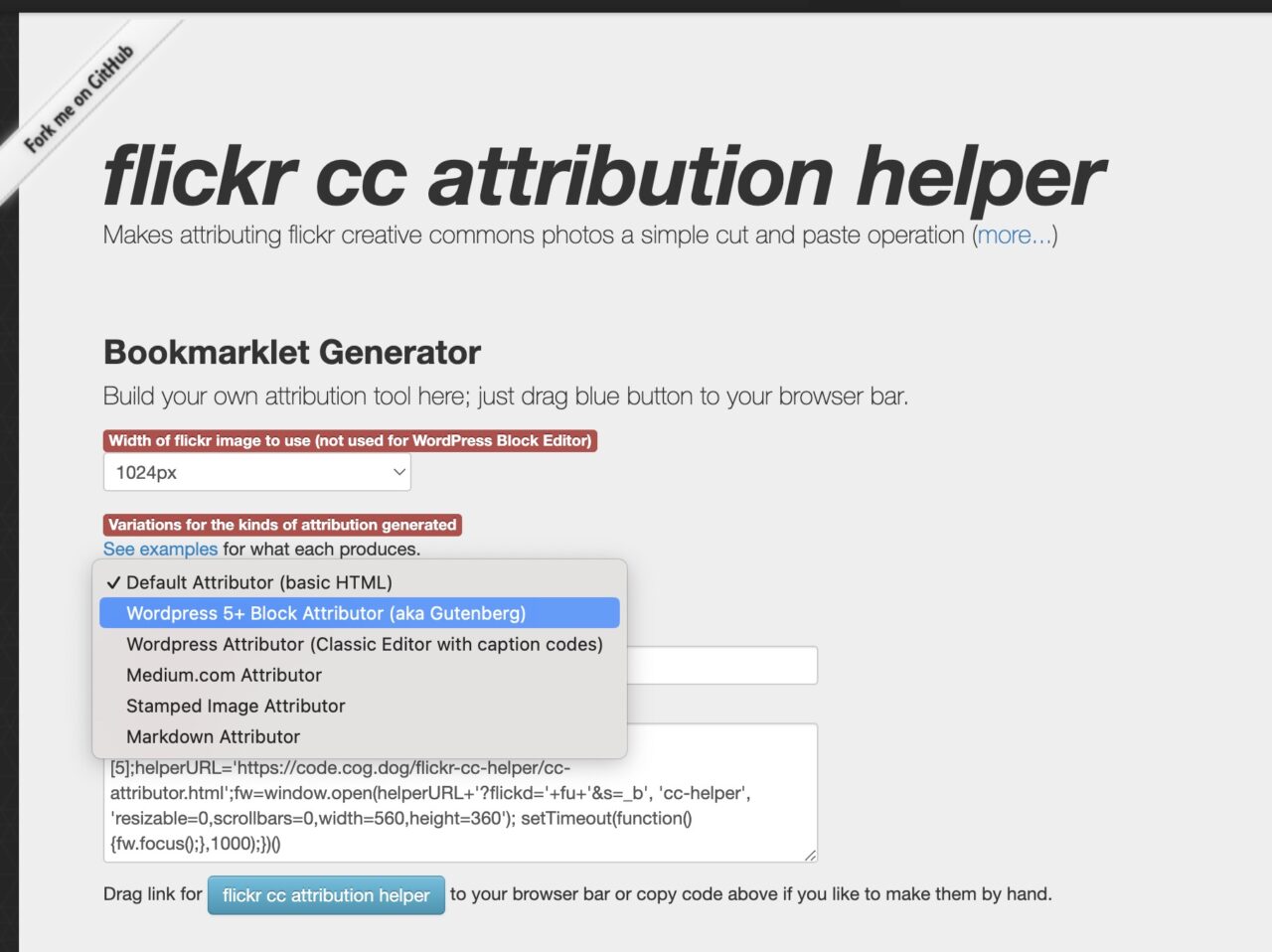
It’s worked pretty much flawlessly– and recent Flickr changes that now include version 4.0 Creative Commons licenses was a signal for me to code a a quick update. The same attributor works for older 2.0 licened photos and newer 4.0 ones. And no one needed to change or update their bookmarklet tool.
I guess that was not the only change, and I would have never really noticed this other new feature (or maybe it has been there before)– flickr now offers directly in their own pages a copy/paste attribution for CC licensed photos.
Halleluah, right?
This is what is now available directly from flickr for say an almost random photo of a sunflower (okay, nor random, it’s mine).
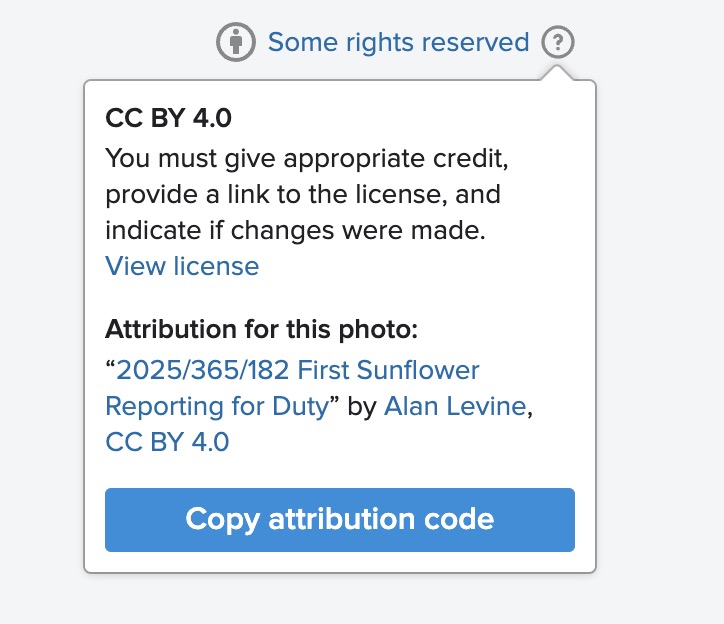
I do state that this is well done TASL version, if you select and copy the string under “Attrbution for this photo” you get the full hyperlinked rich text you can use in a document, email. presentation. If you click the Copy Attribution code, you get it in HTML. Works ok.
The thing is, the attribution is available only if you click that teeny tiny question mark icon that in the bottom right corner of the flickr page, very far from the photo. Who would ever know that attribution lurks there? Can you easily find it?
Compare that to the right on the display page attribution available for a sunflower from Openverse or right before you download a sunflower photo from Unsplash as well when downloading a sunflower from Pixabay. I have to say flickrs design suggests a statement of not caring much about attribution if finding the text to use requires guessing what lurks under a tiny question mark. Perhaps if you put attribution text right on the photo page, more people might use it?
But even more in the design by obfuscation method, if I am logged into flickr, I cannot get any attribution for my own photos. Instead, adjacent to the license I have assigned for this photo, CC BY 4.0, there is another teeny tiny “i” icon, and when I click that, I get flickr’s explanation if its CC licenses, which is what I have known like since 2004.
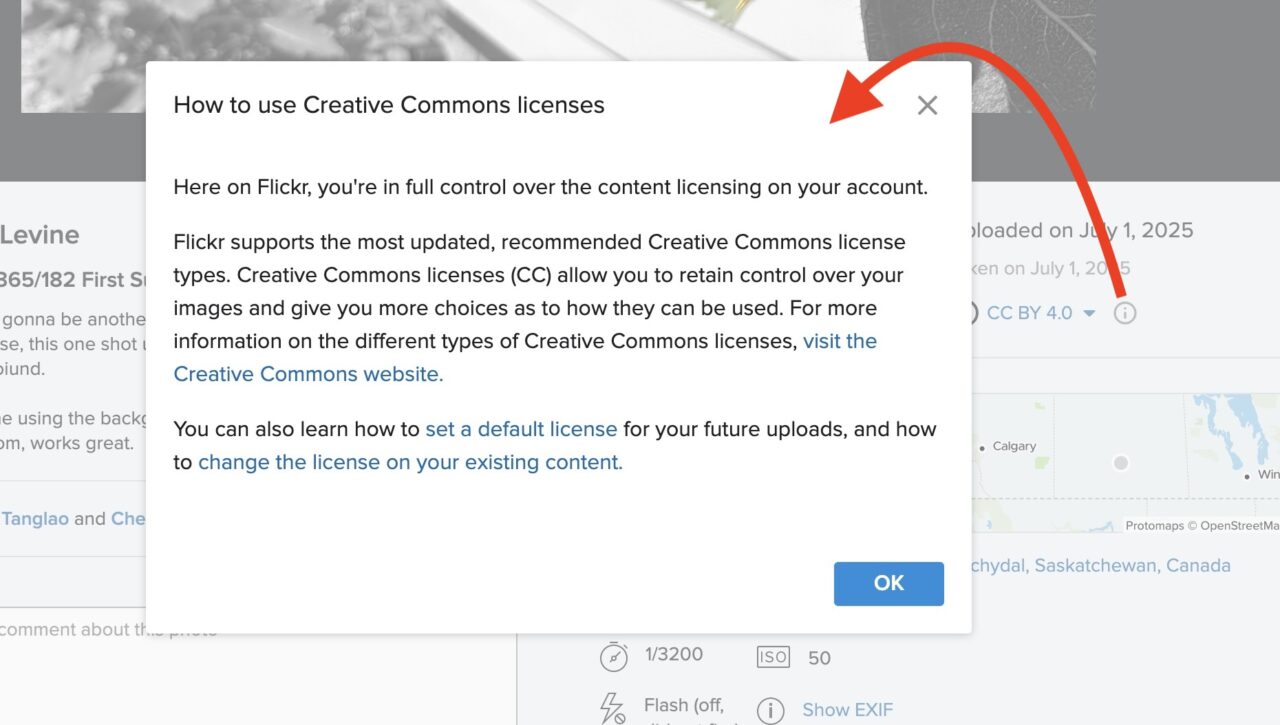
I’m sure someone in the design meeting said, “Someone like Alan who posts photos under CC licenses never need to attribution since they own them.”
But here is where I am like a lonely outlier on the Creative Commons spectrum. I. Always. Attribute. Even If. I. Am. Not. Required. To. Why? When someone comes across a page where I have reused my own photo, without any attribution it suggests that one does not even have to bother. I include attributions nnot to comply with some rules of licenses, I do it to model behavior I want others to adopt.
And I go farther, I not only attribute my own photos but any that are in the public domain. So often I see in guides to using open licensed media, the description of public domain as “you do not have to attribute.” I attribute to give credit, to point to sources, not to be some rule follower.
My process is whenever I am looking for a CC licensed flickr photo, mine or someone else, once I am looking at the photo page, I just click my “flickr cc” link on my toolbar, and up pops a little window with 3 kinds of attribution I can copy simply by clicking in the form field.
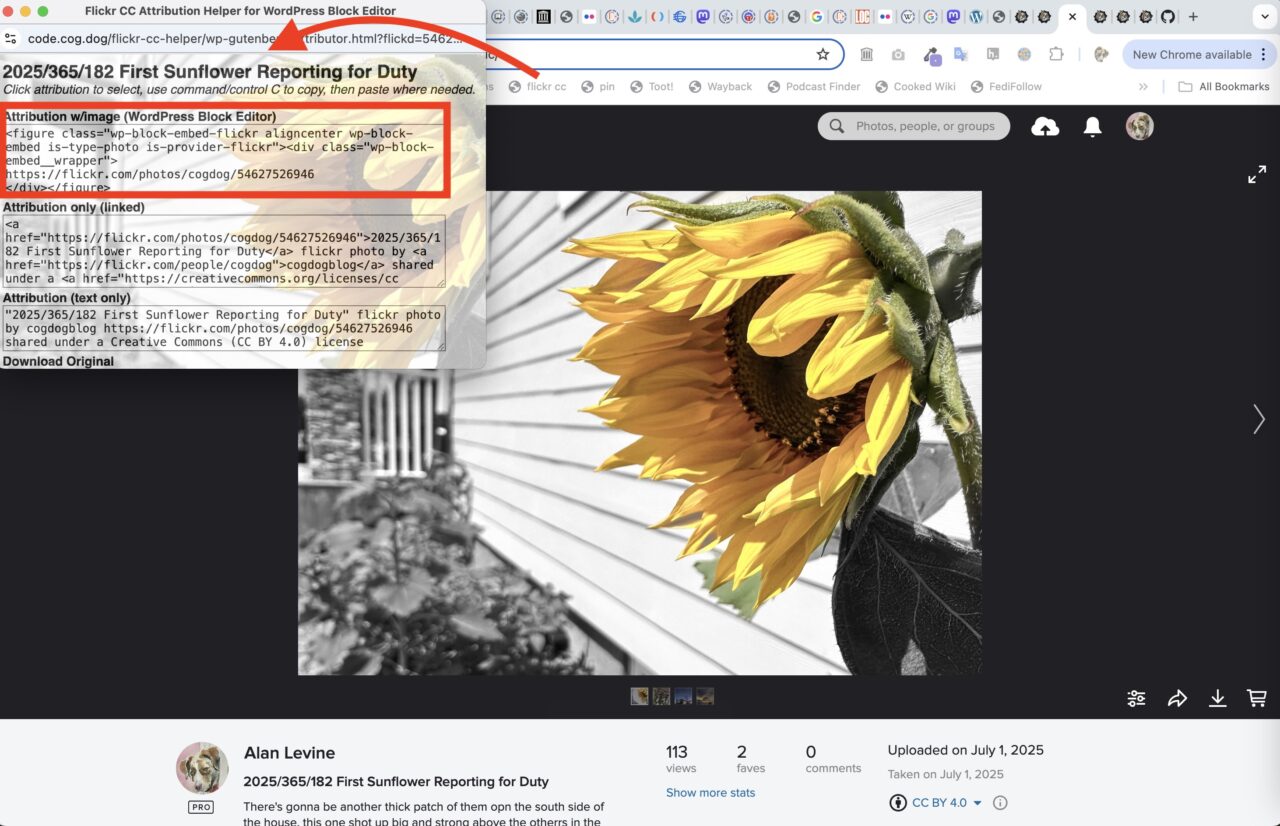
Since I use the WordPress one for the Block editor, I go for the first one, I click to copy that version, come to WordPress editor, press return to open a basic paragraph block, and command V it to get the whole thing- photo and attribution in the caption.
My helper does not exactly match the new attribution code for flickr.
“2025/365/182 First Sunflower Reporting for Duty” by Alan Levine, CC BY 4.0
Since I made the tool I wrote it more in the style I did for years by hand. I like to indicate the source of a photo “flickr”- if I do attribution from other sources, I might replace that with “Wikimedia Commons photo by” or “Unsplash photo by”, and yes, I use a bit more word statement of the license. Either way, all the TASL is there.
Let’s say you don’t like my style, I’m not offended. That’s the beauty of having mine running from GItHub. You can make a copy/fork the source, and modify the places in one Javascript file that formats the text output. But yikes, you might not vibe your way there, you might have to bus open a text editor and edit some Javascript.
I am not in any way claiming I have built the be all end all tool here, but it sure has worked for me for 16 years. And I can see when other uses it because of my own attribution style. The API stats for last year show a high of 112 calls in one week. Yeah that might be all me…
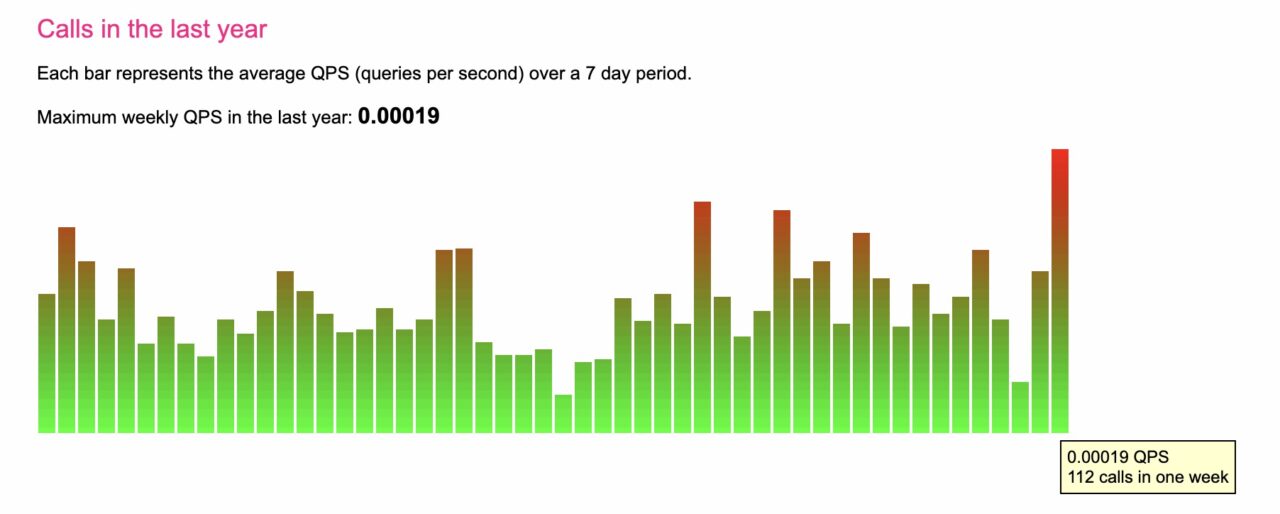
But all of this has been a big circle around the reason I ended up blogging about this. Sure I am hear to toot my own horn.
Toot.
This came out of a nice shoutout over the weekend from a long time fellow blogger and friend Wes Fryer. I have stayed with Wes and his family when I was in Oklahoma City years ago, and we once hung out at a conference he attended in Tucson when I took hime camping up high on the flanks of Mt Lemmon.
Over the weekend Wes shared in Mastodon his experimentation with building a tool for attributing flickr photos.
(as a side note, it was a reply to Wes by Phil Dokas that I discovered flickr’s own attribution helper).
I gotta shout out back that Wes blogs out his ideas, here as Vibe Coding for Flickr CC 4.0 Attribution
I’m excited to share a little “vibe coding” project I worked on today, building on the awesome work of Alan Levine and with a healthy dose of AI-powered assistance from ChatGPT 4o.
https://www.speedofcreativity.org/2025/07/05/vibe-coding-for-flickr-cc-4-0-attribution/
He mentions my Flickr CC Attribution Helper but that he (a) needed attributions for the new 4.0 licenses and (b) he liked the output from another attribution tool, ImageCodr.
I’m looking Wes’s comic (likely GenAI spawned?) and wondering why after the first panel, the first step was turn to Vibe coding with GenAI?
Since not one reads blog posts, any more, especially mine, well I guess he missed my post last week on how I updated Flickr CC Attribution Helper to work with the new 4.0 licenses. But also, if he had messaged asking about the formatting of the attributor output, I could have explained how he could easily have made a copy of my code, and changed the output to be in his preferred wording and style.
I am not here to criticize you, Wes! And if your own tool is working for you, than all the better. What counts is that you are regularly attributing.
My question is, what happens next time flickr changes something? Or what if you decide to make it use a different format for output? Do you just re-vibe the whole thing?
The thing I am wondering is in general, why do people GenAI their very first reflex to find a solution to a problem? Because what I see happening is that in coding like this, you are not very much advancing your own skills to do something similar but different in the future. If you are solely focused on what the little app spits out, what are you growing in yourself for say, an understanding how the flickr API works? Like knowing where you can explore more of its capabilities and build even more things.
Sure it’s impressive what many people are arm twisting GenAI to do. I’m in awe of what Tom Woodward does in his long journey far from Non Programistan. I’m not ruling it out for me, but I am sitting in a spot where it’s not how I want to create nor code. I am in it for more than getting a result, I want the experience of building, discovering, sifting through suggestions.
Again Wes, do not take this as a swipe! I am merely trying to grasp why most people seem to reach first for GenAI.
Happy attributing everyone.
Featured Image: This flickr image came by complete surprise in the Free to Use Browser extension that puts a random public domain image in a own tab. It suggested the idea of tinkering. Here I use the HTML version given to me in one click from CC Attribution Helper Marine lieutenant by the power towing plane for the gliders at Parris Island, S.C. (LOC) flickr photo by The Library of Congress shared with no copyright restriction (Flickr Commons)
I was curious about this photo because it looks like the lieutenant is female and its a WW2 era photo. Oddly there were no comments about it, so I did some legwork and added a comment, finding an article on “The 80 Year History of Women Marines at Parris Island” This always is a find bit of time spent doing my own web research spawned by curiosity, not just looking to ChatGPT to tell me answers.
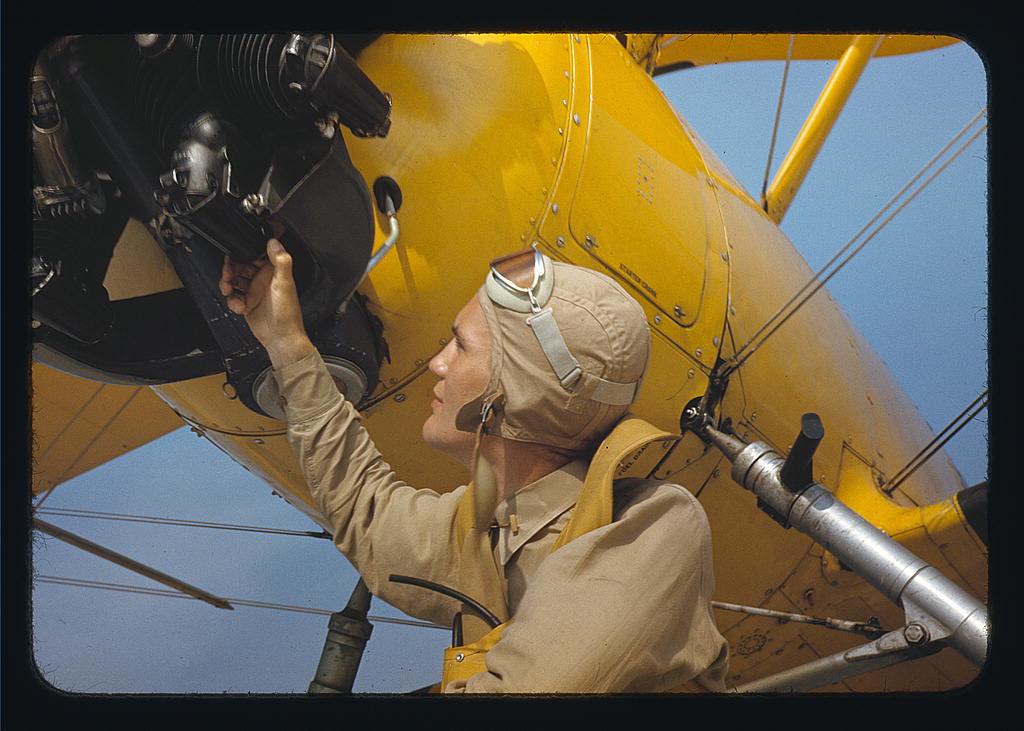

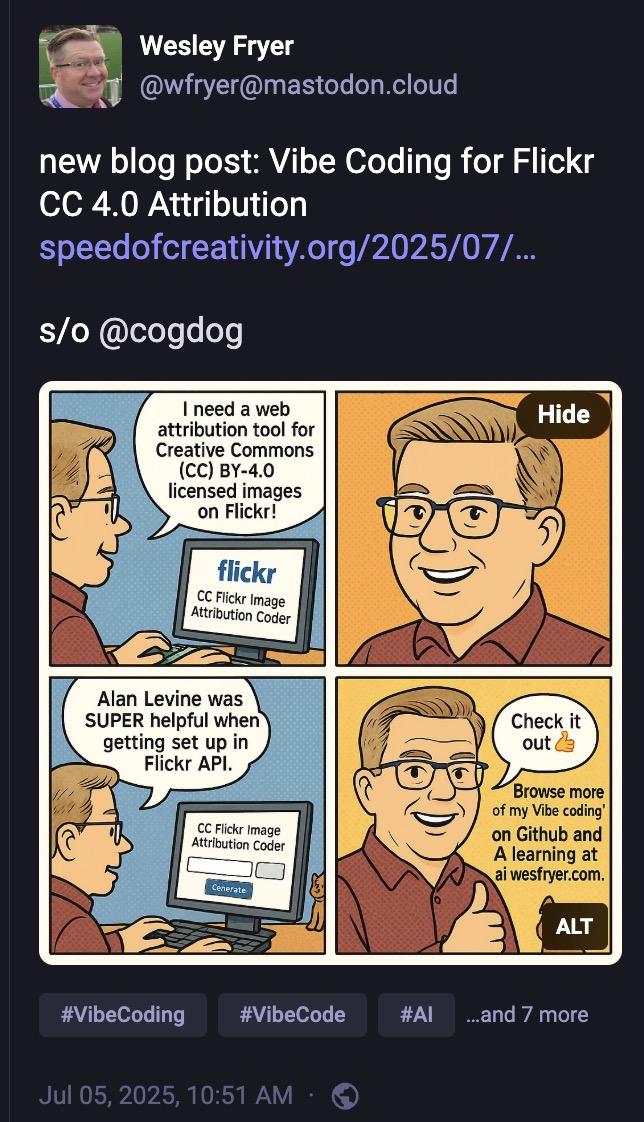


I regularly use your bookmark tool and your reminder for attribution is always welcome.
Kevin